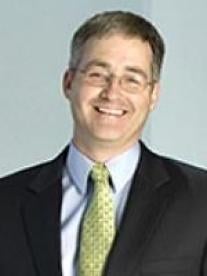LinkedIn remains the social network of choice for the legal profession. According to the soon-to-be-released 2013 Legal Technology Survey Report, prepared by the ABA Legal Technology Resource Center (LTRC), 55.8 percent of respondents’ law firms maintained a presence on LinkedIn, while only 34.9 percent maintained a presence on second-place Facebook.
As a legal ethics lawyer with a large LinkedIn network, I frequently speak and answer questions about how the legal ethics rules regulate lawyers’ LinkedIn activities. Recently I have also been cited as an authority – including in a May 21, 2013, ABA Journal article available at http://bit.ly/192t6TS – on whether lawyers may accept LinkedIn endorsements.
This column therefore offers six practical ethics pointers for lawyers on LinkedIn.
1. Keep everything truthful. Ordinarily, Rule 4-8.4(c) prohibits lawyers from engaging in conduct involving fraud, deceit, or misrepresentation in any setting, even when the lawyer is not practicing law. Further, since your Profile is probably going to discuss yourself or your legal services, Rule 4-7.1 prohibits any false or misleading statements. I generally advise lawyers to treat their Profile and posts like affidavit entries: if you would not aver to it, don’t post it.
2. Treat your Profile as an advertisement. Lawyers generally create a Profile on LinkedIn to attract attention, for networking and professional development opportunities. Most also hope to gain some legal business. If you hope to attract legal business through your Profile – that is, if you are a lawyer in private practice – you should treat your LinkedIn profile as an advertisement.
Missouri Rule 4-7.2(f) generally requires a lawyer to place a disclaimer – “The choice of a lawyer is an important decision and should not be based solely upon advertisements” – somewhere on most advertisements. If you list more than your name, firm name, bar admissions, areas of practice, and contact information, you are going to need the disclaimer. Mo. S. Ct. R. 4-7.2(g). I include it at the end of my Profile’s “Summary.”
3. Connect with acquaintances. Connections are the core of LinkedIn. You can communicate with Connections, learn their Profile updates, congratulate them on new jobs and achievements, and invite them to join Groups on shared interests. I have even used my Connections to promote a free CLE lunch earlier this year.
Lawyers sometimes hesitate to connect with people they don’t know well because they fear violating the Rules limiting solicitations, but this should not stop you. Rule 4-7.3 prohibits a lawyer from having “real-time” communications, or soliciting legal work on a specific legal matter, except when the person contacted is a lawyer or has a former personal or business relationship with the lawyer making the contact. It generally does not apply to Connection requests, because the Connection request is not “real time” and 2 there is no specific legal matter where the lawyer wants to be hired.
4. Beware listing legal specialties. Rule 4-7.4 states that a lawyer may list particular areas of practice, but must include a disclaimer if claiming to be a “specialist.” Thus, if you are going to list legal activities under a Profile’s “Specialties” tab, you should somewhere state that “neither the Supreme Court of Missouri nor The Missouri Bar reviews or approves certifying organizations or specialist designations.” Mo. S. Ct. R. 4-7.4. The only exceptions are patent and admiralty law. Id. Or you could list non-legal specialties: one St. Louis lawyer’s profile claims his Specialty is “[d]oting grandfather of a perfect little boy.” No one could face discipline for that.
5. You can accept truthful Endorsements. The most frequent question I receive about LinkedIn is whether lawyers can accept truthful Endorsements. In my (professional) opinion, Endorsements are more akin to listing an area of practice or – as they are labeled – a “Skill” permitted by Rule 4-7.4 without a special disclaimer than a “specialist” claim that requires a special disclaimer under Rule 4-7.4. After all, most people list numerous skills – LinkedIn allows 50. Skills may also include foreign languages, activities like writing and public speaking, hobbies, and interests. Thus, I believe lawyers can accept truthful, non-reciprocal Endorsements without reservation or special disclaimers that Rule 4-7.4 would require for "specialists.”
6. Avoid reciprocal endorsements and recommendations. The “non-reciprocal” reference leads to my final point. LinkedIn encourages people to obtain and give Endorsements and Recommendations. Lawyers should be careful, however, not to reward Endorsements or Recommendations, or to provide reciprocal Endorsements or Recommendations. Rule 4-7.2(c) generally prohibits a lawyer from giving anything of value for recommending the lawyer’s services. Thus, endorsing or recommending a friend because that friend recommended you would not be a wise idea.
Conclusion. Many lawyers find LinkedIn provides a great way to keep track of colleague and friends, and to locate practicerelated resources. According to Josh Poje, the 2013 ABA Legal Technology Survey will report also that lawyers are having success retaining clients through LinkedIn. If you have been hesitant to try LinkedIn, hopefully this column will help get you started. And feel free to send me a Connection request.
This article was previously published in July 2013 St. Louis Lawyer.



 i
i

